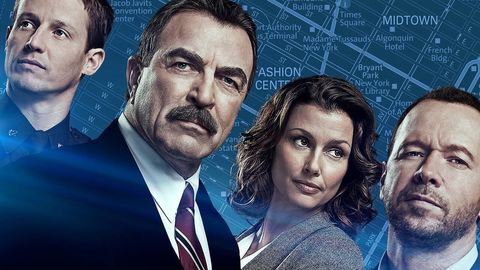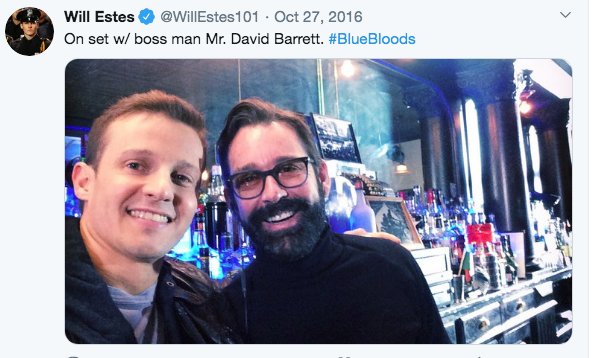
The director of CBS’s Blue Bloods David Barrett talks to Mandy News about how he got to where he is today and shooting the hit cop drama.
Article written by Andrew Wooding for Mandy News October 2017
So, where did you grow up and how did you go about pursuing film-making and then ending up getting directing work to begin with?
Well, I grew up in Mammoth Lakes, California. It’s in a ski area that’s four hours north of Southern California. I have an interesting background. My family members are definitely all visionaries. My grandfather was a hydrographer – somebody who takes the snow depths of the Sierra Nevada mountain range. He ended up more or less orphaned as a child and he has amazing stories. His name is Dave McCoy. His story comes back to Blue Bloods, so I’m going to explain a little about him.
He was pretty much on his own at 12 years old and went to find his father in Bakersfield, California when he was older. He knocked on the window and his Dad opened the door and said ‘Go away, I have a new family now.’ So he hitchhiked back up through the Owens valley and looks arounds the mountains and says ‘this is going to be my family. These mountains are going to be my family.’
He married my grandmother and realized this one mountain had a lot of snow, loved to ski, and so decided to sell his Harley for 75 bucks and buy a truck engine and thought they could ski on the weekends and have the community round to have some fun.
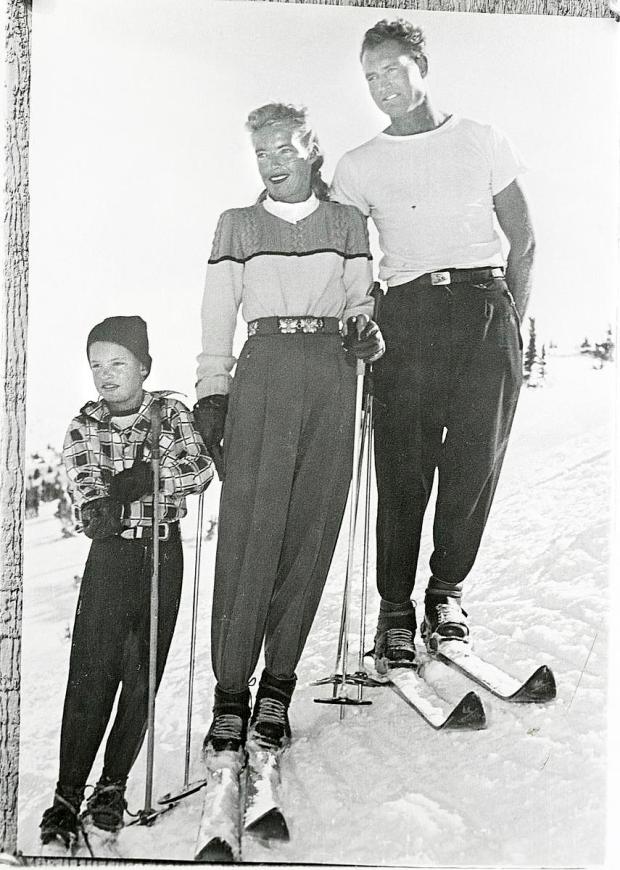
What ended up happening is my grandmother said ‘We’re out of money, we have nothing. We have nothing, we have no money for food this week. We have to charge money,’ and he said ‘No, we’re not going to charge, that’s not what this is about.’ Long story short, my grandmother asked for 25 cents from everybody and they gave it and by the end of the day they had $7.50 and that’s how he started Mammoth Mountain ski area, which is the largest privately owned ski area in the world.
I’m not sure it was intended to really be a business and he came at it from the purest kind of way and that is to bring people together to manufacture fun. So when I grew up, I grew up in a town that my grandfather owned. He owned most of the land and would give it away to people who had dreams of owning their own business. He would buy the hospital, give it back to the town, buy the schools and give it back to the town. He gave all the money back. He never was a guy that gave a deal, or gave, you know ‘If I give you this land, you’re going to give me 15% off.’ He always payed full retail, and took just the joy of the job for him.
*Update: On February 8, 2020 Dave McCoy left us at the age of 104. Watch this moving tribute from the Mammoth Mountain Community
So, now I’ll double back to why this is relevant. My mom was the youngest ever to win a medal in the world championships, ski racing at 15 years old, on the cover of Seventeen Magazine, all that stuff. My dad, Stan Barrett, was in the military, he was a golden glove boxer, went to be an extra on a movie and ended up doubling Burt Reynolds in the movie. My dad was Burt Reynolds and Paul Newman’s stunt double. Paul Newman was my godfather, my dad ended up becoming the first man to go Mach 1 on land, driving the Budweiser rocket car that Hal Needham owned. Hal Needham was the stunt coordinator that discovered my dad, but Hal wrote Smokey and the Bandit, The Cannonball Run and Hooper. He’s the highest grossing movie director for five years straight in Hollywood, and I grew up around him.
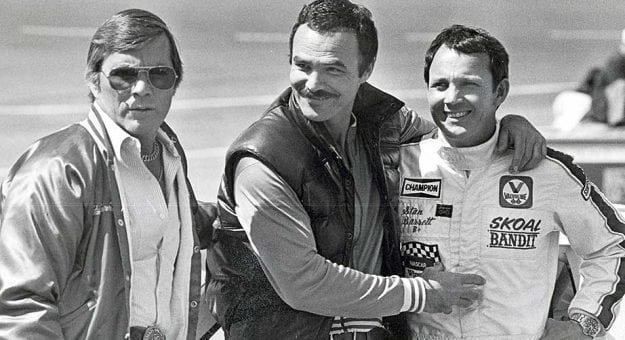
I grew up around sets. At an early age, I said I was going to be a champion motocross racer and then I’m going to be a director. That was my goal. I ended up doing a lot of sports and created a couple of X-game sports. I raced professional motocross, ski-raced in the Junior Olympics and so it was very sports-oriented, while staying on sets. The only way I knew how to direct was to get into the stunt world and become a stunt coordinator, become a second unit director and then try to prove somehow that I was so good that they’d give me a shot to work with the actors and I’d be the first unit.
What films did you work on stunts-wise?
I did the Matrix and Waterworld and with Spielberg on Jurassic Park. But everything was a plan to be able to insert myself into a conversation where it really was obvious that I’d prepped myself in story, character and tone, hoping for the opportunity that one day I’d be asked a question and I’d have the right answer, so I could set myself apart.
I did a lot of movies as a stuntman and then I got an opportunity from Frank Mancuso Jr to stunt coordinate Species 2. That was one of the biggest breaks I had ever gotten to that point, and after that I got Stigmata with him, and I remember- and this is funny, to me, anyways- I found a way, they were trying to figure out a shot that was one a crane on the back lot at Universal and they wanted to have the crane go straight down and tilt up to see Patricia Arquette walk out of a liquor store.
The crane has a big arc, it goes out, thirty feet and in thirty feet. So you have to dolly it in and out. So that’s what they were going to try to pull off and then we’d have to go take the cars, and at eight frames a second they’d have to go four miles an hour. You kind of had to reverse engineer the shot, because it was a shot from Earth and a nested zoom all the way into Patricia Arquette. I remember saying ‘I have an idea,’ and they said ‘You know what? You’re 25 years old. As a stunt coordinator, you’re lucky to have that job.’ That was the tone. But they said ‘Just make sure your stunt people are there on time, okay?’ and I was just totally, completely embarrassed.
I had saved a little bit of money at the time and they were still going to do it with the crane and I just didn’t think it was going to work. So I saved 10 grand, put a budget together and I knocked on the door of the producer Frank – who was so intimidating – and said ‘I’d like to talk to you guys. To you and the director.’ They said ‘Not now.’ I said ‘Well, I have $10,000 here that says I need to talk to you guys.’ They were like ‘Okay, come on in.’ So I go in and say ‘You guys still do not know how to do that shot, right? And I have $10,000 here that says I know how to do this shot. I have two or three pay checks, and I have a check written to you, Frank, for the remaining money, it’s $10,000, here’s my budget, I’ll need a 200 foot crane, I need a camera, I need four grips, I need four stunt players so that I can prove it to you in a rehearsal. And if I don’t do it right in the rehearsal, then you can have the money.’ They just looked at each other and said ‘Okay.’
So I walk away and of course I don’t think they ever intended to take my money, but I got the crane, I got a descender, packed my mono. I got the guy who does all the big rigging in Hollywood on all the biggest movies. I got him and I harnessed up and they have a cable on a descender, so a guy puts his hand around this cable. they let the cable out and there’s a piece of tape that their hands hit, and that’s when they know there’s a motorcycle brake on this disc, to stop it before I hit the ground. We design this thing, I’m up, 200 feet in the air, they drop me right in the traffic, car goes right by- boom! Stop me three feet before I hit the ground, tilt up to see Patricia Arquette and then I have four grips come in and they spool it out thirty feet and I did a tracking shot there, just to add a little bit of difficulty to it. They saw it and they were like ‘Oh my God. This is fantastic.’
Jeffrey Kimball was the DP, famous guy, he’s awesome, legendary, and he said I wasn’t going to be able to operate the shot even if I was able to pull it off and saw it as ‘No one’s crazy enough to operate this shot. You can operate it.’ So they let me do it. I had my 10 grand back and I was in business, so I got to operate the shot.
Then they wanted to a sequence where they wanted to put a technocrane on a subway car and they thought if they were moving it in the stage and the techno was here they could go in and out and I said ‘Guys, it’s attached to the crane. This is not the way we do it, because then you’re not feeling the movement.’ They insisted that their way is correct so I said ‘Alright, let’s see. This is going to take you guys two weeks and you have it scheduled for four days. There’s no way.’ By day two, they said ‘Well this is not working. We’re behind,’ and they had to go to Mexico to shoot a sequence in this big church and they had to abandon the sequence.
So the producers call me in the office, like I’m in trouble, and I’m panicking and they’re just staring at me and ultimately what they said was ‘You’re right. We want you to direct second unit,’ and all smiled. So they were just trying to give me a tough time. Rupert Wainwright believed in me enough to leave the sequence to me and so I got to have five weeks of second unit and that’s how I got my DGA card.
That movie came out, did some business and then I started getting job offers on other big shows. I did a sequence for Final Destination 2 that was nominated against Spielberg, Peter Jackson, and George Lucas, in the TV awards and that sequence beat it out. It’s one of the top 10 sequences of all time, and was shot in less than four and a half days. That kind of launched me and then I figured ‘I have to prove that I can work with actors.’
I forewent a decent paycheck for a little while to take a little TV show called Pacific Blue. Maybe not the smartest decision, but I took a giant paycut and I said to the producer, John Moranville, ‘I’ll take the job if I have an opportunity to direct the second unit with your actors for one day.’ I went from making $18,000 a week to making $1800 a week with the possibility of just one day out of 22 episodes that I could prove I can work with actors. I made that investment into my career but I got to do it and after I directed that day the actors loved me, it cut together well and there was one episode left that nobody had signed on for.
I went into the boss’ office and said ‘You’ve promised me everything, and everything you ever promised me you’ve delivered on so I don’t want to seem like someone who isn’t appreciative but I would really love to direct that episode, that six-day episode.’ Ultimately, they strung me out a little bit and then gave it to me. So I got my first episode, and then I just started doing episodic shows, a lot with action, because that was my pedigree. I think I’ve had three or four episodes nominated for Emmys. I think there’s one win for action.
Then I started to become Director-Producer. I know budgets extremely well from the ski area and I know the visual side and the way to shoot them. Having Paul Newman as a godfather, he was a guide in how to direct actors, how to approach actors and work with actors. That combo helped me get to where I’m at.
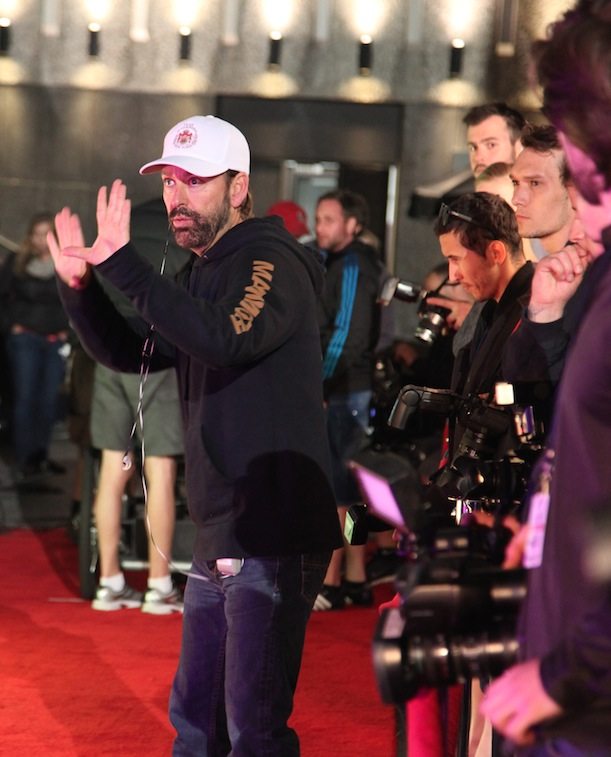
My brand, if you will, is to find the heart in a show. Where is the heart? If there’s no heart, it’s not relatable. If it’s not relatable, it’s not commercial. My approach is this. I’m invited into people’s home every Friday night at 10 o’clock. How can I deliver something that’s inspiring? Try to give whatever I can to each character, just really try to give an idea to an audience, an understanding and backstory by choices that I make in wardrobe, location, inflection.
Every decision I make is trying to give an audience an understanding of each one of those characters, and giving an audience the message that – wherever there’s a positive message, to give it to them. Wherever there’s a character that is a villain, try to understand why they robbed and when they were innocent.
In Arrow, for example, I would suggest that you watch the finale “Sacrifice”. It’s something that I’m really, really proud of. On TV.com it is literally the highest rated episode I’ve ever found on that site. It’s a superhero show but the showrunner Guggenheim – it was so great to work with a showrunner like that so that we could find the heart in that character, find the relationships and really take the action and find a way to define the heart in it. Ultimately, it really resonates with an audience.
So tell us about Blue Bloods – how did you end up on it?
I watched Blue Bloods and I remember calling David Stapf at CBS and just begging to be on the show, because it was so much like my life in Mammoth. You have a character who kind of runs the city, runs the town, kind of like my grandfather. It had policemen that are just to me, like stuntmen. They don’t make a lot of money in comparison to the lead actors, you don’t know if they’re going to come home or not at the end of the night and you know they’re giving it everything that they have to protect and to provide for their family.
So there was a relevance. The characters and the situation related to me on a global scale. I understood it. With a grandfather that’s a lot like Tom Selleck, it just kind of felt like home. I knew if I could try to approach it from a way where I could let the actors really have as big a stage as they needed to behave as truthfully as they could, that the audience would never bump on the message. The audience would never be distracted, whether consciously or subconsciously from the message that the writers were trying to convey in the piece.
David Barrett directing Blue Bloods actors: Vanessa Ray, Will Estes, Nicholas Turturro, season 5, 2014 video via Mike Lenskikh
That’s how and why I really loved Blue Bloods. It’s very inspiring. The writer, Kevin Wade, is unbelievable at taking social issues and filtering them through this family and giving us a roadmap of how to handle that situation in an honourable way, with integrity. I just thought ‘Wow, what an opportunity to be on a show that can shed a light on a subject that’s very tough to talk about and give every point of view.’ Whether it’s from a grandfather, to a father, to a son, to a great-grandchild. To a grandchild. It has every demographic’s point of view on that social issue and I thought ‘Well, I’m just going to do kind of what Paul Newman said.’ He said ‘Always block behaviour. Always be as truthful as you can. Always give the actors a stage to work with.’
That’s what I think I was able to bring to this show; scope, a style in which we shoot it. I kind of give those parameters to the directors since I came aboard five years ago. This is my fifth year here.
So what are those parameters? Tell us how you shoot it.
I have a style guide, and I tell other directors ‘This show is a painting, and each storyline is a color to this painting, so let’s approach it from a cinematic rhythm, if you will.’
For example, Tom Selleck, we shoot, very steady, very true – no frivolous movement. He is our leader, he is his family’s leader. He guides us, he is the most stable, he has the wisdom. There’s nothing we need to do with the camera for him, other than listen to what he says. So the camera hardly moves at all. It may move into the beginning of a scene slightly, but for the most part it is tried and true, just like his character.
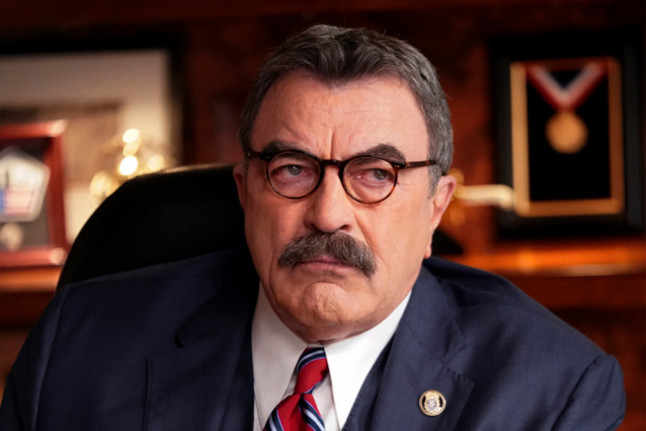
Danny’s character I shoot on a really wide, wide lens. When he’s out on location, we make him feel like he’s a needle in a haystack and we stack him up with another character, so it’s very, very gritty. He’s a detective, he’s always trying to determine if what is being said to him is true or not. We keep him alive, we keep the camera moving with him, we shoot it point of view specific from all the Reagans, but we move with him. We want to put the audience in the car with him.
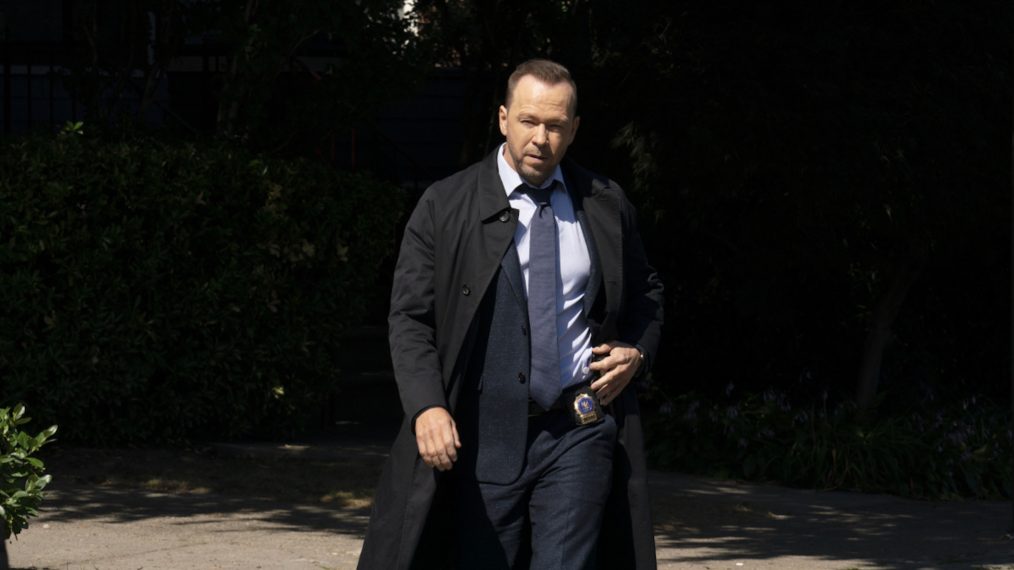
Bridget, we shoot on a little bit of longer lens and we use a dolly or a steadicam. Never hand-held with her. She is a district attorney. We shoot her a lot like Tom because she’s very sure and I try to shoot her in a way that we feel that every decision is made with thought. There’s not a lot of movement, there’s not a lot of energy to it. Any movement that she does have, it’s always very, very specific. Also when an idea crystallises or she’s weighing the pros and the cons and once she finds ‘aha!’ that defining moment, we’d punctuate that moment.

Jamie and Eddy, Will Ester’s character, I shoot no dollies, ever, hand-held or steadicam, on a 24mm, 29mm and a 40mm. Those are the only lenses for those characters and it’s to keep them alive. Keep their energy, they’re youthful. They’re somewhat romantically linked at times and I shoot them on an older lense so that it has imperfections. It’s a little warmer, so it creates that romantic kind of feel and I try to always keep their energy with the camera.

Now, if there’s two Reagans in the scene, the eldest’s style always trumps the youngest’s style. So, that’s how we operate and then it all comes together at family dinner and it’s all pretty much Tom Selleck’s style.
It’s thought out, so when people say they like Blue Bloods for how we do action, I appreciate that, because I think it has an effect on a viewer and when I first got here there was no kind of roadmap to that. We tried to, as Kevin Wade would say, codify the style of it. We paint outside the lines for sure, in terms of style, we aren’t tried and true in every scene, but by and large we really try to have that sense of cinematic rhythm and hopefully that has impact on the characters and gives a consistency there.
For me it’s all about that family dinner, when every style collides into this collage and this painting, so to speak. It all comes together in that moment. We just have incredible writers and with incredible executive producer Leonard Goldberg who knows how to connect with an audience, it works. Leonard is a genius. I’m so lucky to have worked with him in this capacity and I’ve learnt so, so much about the art of connecting with an audience and what to pay attention to and what not to. He’s taught me the art of the TV business.

And Kevin’s just amazing too. He balances all of the social issues and does it in a way that isn’t off putting ever, from either side of the coin. It’s a dance that I respect so much. It’s great to work on a show that has morals and ethics. I’m really blessed to be able to inspire people and wherever I go it’s ‘Oh, you work on Blue Bloods? I love that show, I love that show!’ and I’ve worked on some pretty big shows but the passion and the compassion that they have for the characters and the audience is as genuine, I think, as the episodes are. It feels amazing.
What advice can you give to an aspiring director hoping to follow in your footsteps?
That’s easy. The one thing that you have for free is your imagination. Shoot whatever you imagine and do not let anybody get in the way of your original vision. The truer you can stay to it, the more original you are. Honor your vision.
If you have an iPhone, you can make a movie. That’s the world we live in. It wasn’t like that when I started. I truly believe my assistant is a more relevant filmmaker than I am, because he can reach a younger generation and has that eye and his finger on the pulse. I just say to all filmmakers, honor your imagination.
What advice could you give to actors about working on set?
Well, it’s my job to create a stage for them. So, for somebody who doesn’t have a lot of experience, it really rests on me to give them the stage, to make them feel safe enough, to give them a sense that they are in that scene, in that time, in that room with the other characters. I feel like if I’m supportive enough of them and I’ve done my job, the responsibility rests on me.
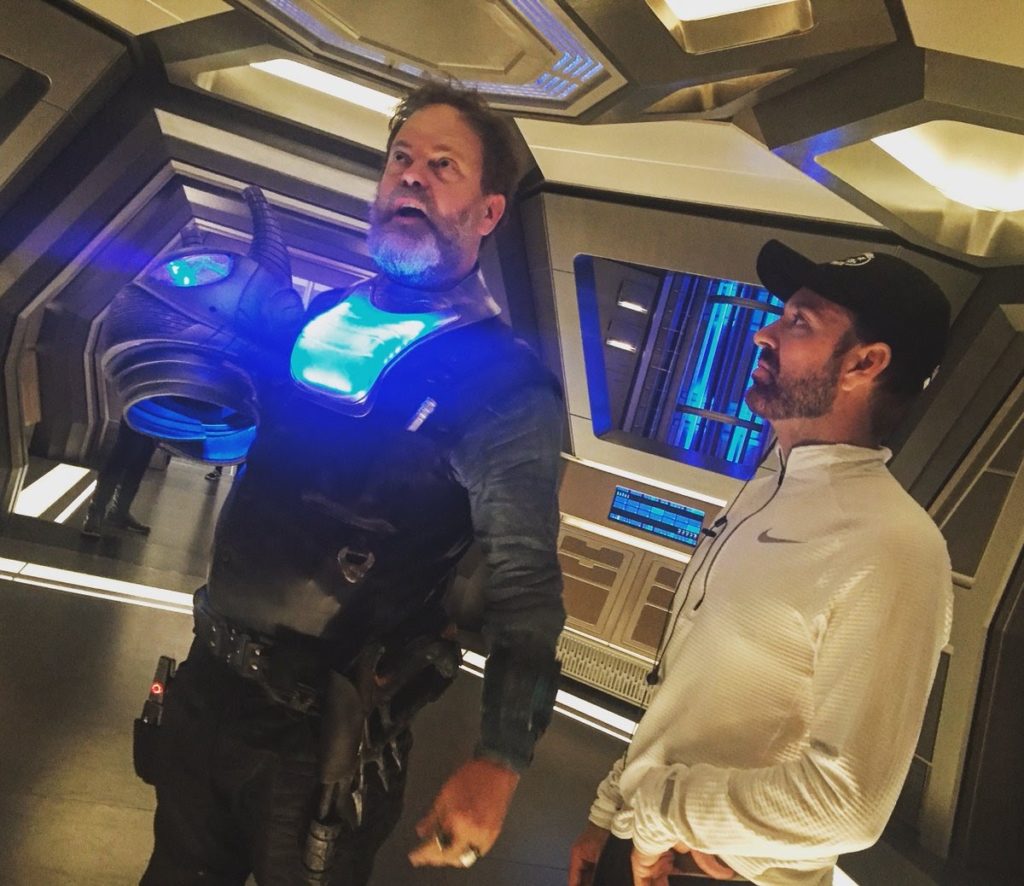
But I think that I would say, just, to them, one looks for somebody that does their homework and has a point of view. When they have a point of view – sometimes it’s not my point of view, sometimes it fits a little bit better than my intended point of view – that’s when that artist is really contributing because they see the big picture and they’ve come up with a backstory that earns every moment on that page, that earns every line of dialogue.
Those actors are such a gift. It’s like, the actors on our show, they’re like that. They have a point of view and that’s so much fun as a director. It’s a gift, you know.
You’ve also made a feature film Fire with Fire. Tell us about that.
Fire with Fire was one of the toughest movies I’ve ever had to do. I mean, Rosario Dawson, Josh Duhamel, amazing, Vincent D’Onofrio. Amazing. But we shot that movie in 19 days. That took a lot of my TV experience. We shot more page count than we almost do here on a stage, on a show that’s been around for 22 episodes, on sets that you shoot every week.
I had to create sets within one location, practically. That was all I had to make them different and I had no money, no money at all to shoot that show. It was very, very difficult, scored very high, still didn’t have an ending or really a beginning to the movie. I thought I was going to be able to shoot a real ending and a real beginning. We just knew we had to get into production and Bruce Willis’ time was very limited, so it was very, very, very difficult to shoot that.
We thought we were going to have 38 days to shoot that movie. At the end of it, Rosario and Josh offered to give their salaries to fund a couple more days so we could shoot a real ending to it. I think if we had and end and a beginning, that movie would have done a lot of business, but it was meant to go straight to video on demand.
But I guess my signature, is being able to shoot big action and scope in an extremely efficient manner. My average hours on Blue Bloods is under 10 hours and I get 63 setups, if I need them, per day. Normally shoot days are 12 hours and a normal amount of setups are 35. I have a style of shooting where it’s like shooting a play. I try never to cheat on the blocking, so therefore we are extremely efficient. It’s kind of become a brand, I guess.
Fantastic, we’ll let you get on with your day then, because you’ve probably got loads to get on with. Any last thoughts?
I definitely want to say that I realize that we’re invited into a home every Friday night and the goal is to deliver something that tugs at your heart and to give our audience something that they feel, where going away from it they’re inspired. I want to deliver the best, most entertaining product I possibly can. We appreciate everybody showing up.




